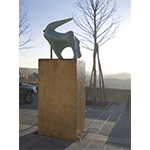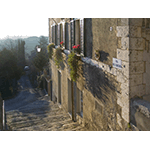Thermal Baths of San Casciano dei Bagni
The hot springs of San Casciano, already known in antiquity, were recalled in the early 15th century by Ugolino da Montecatini who reported their therapeutic virtues: «Near a Castle known as San Casciano is a spa called ‘of the earth’. They say it is beneficial for the cold affections of the uterus, for kidney and gall stones and, at the same time, for aching joints […] A second spa is known as the boiler and because its nature is very hot and dry, it is indicated for the treatment of wet scabies and for all ailments caused by humidity […] Yet another spa known as Santa Maria and quite hot and dry […] treats the tremor of the weak-minded, pangs caused by indigestion, the phlegm and dropsy caused by cold».
In 1607, after finding the waters of San Casciano beneficial, Grand Duke of Tuscany Ferdinando I de’ Medici had a large travertine portico built in the establishment that still today is called "Bagno del Portico Grande". The effects of the water were documented in 1635 by Ascanio Piccolomini who, from Siena, wrote to his friend Galileo in Arcetri to inform him of his need for «a long purgation that on Saturday will lead me to Bagni di San Casciano». That same year, Grand Duke Ferdinando II also went there.
The numerous hot-mineral springs were analysed by naturalist Giorgio Santi, among others, between the late 18th century and early 19th century. The waters of San Casciano, which rise from 42 springs, guarantee the overall largest flow of the thermal baths in Italy and among the highest in Europe (5,800,000 litres per day!). The still perfectly functioning thermal baths continue to offer a pleasant sojourn, as well as relief to people suffering from diseases of the respiratory and digestive systems.
****************************
Texts by Graziano Magrini
English translation by Victor Beard
Last update 06/feb/2008





